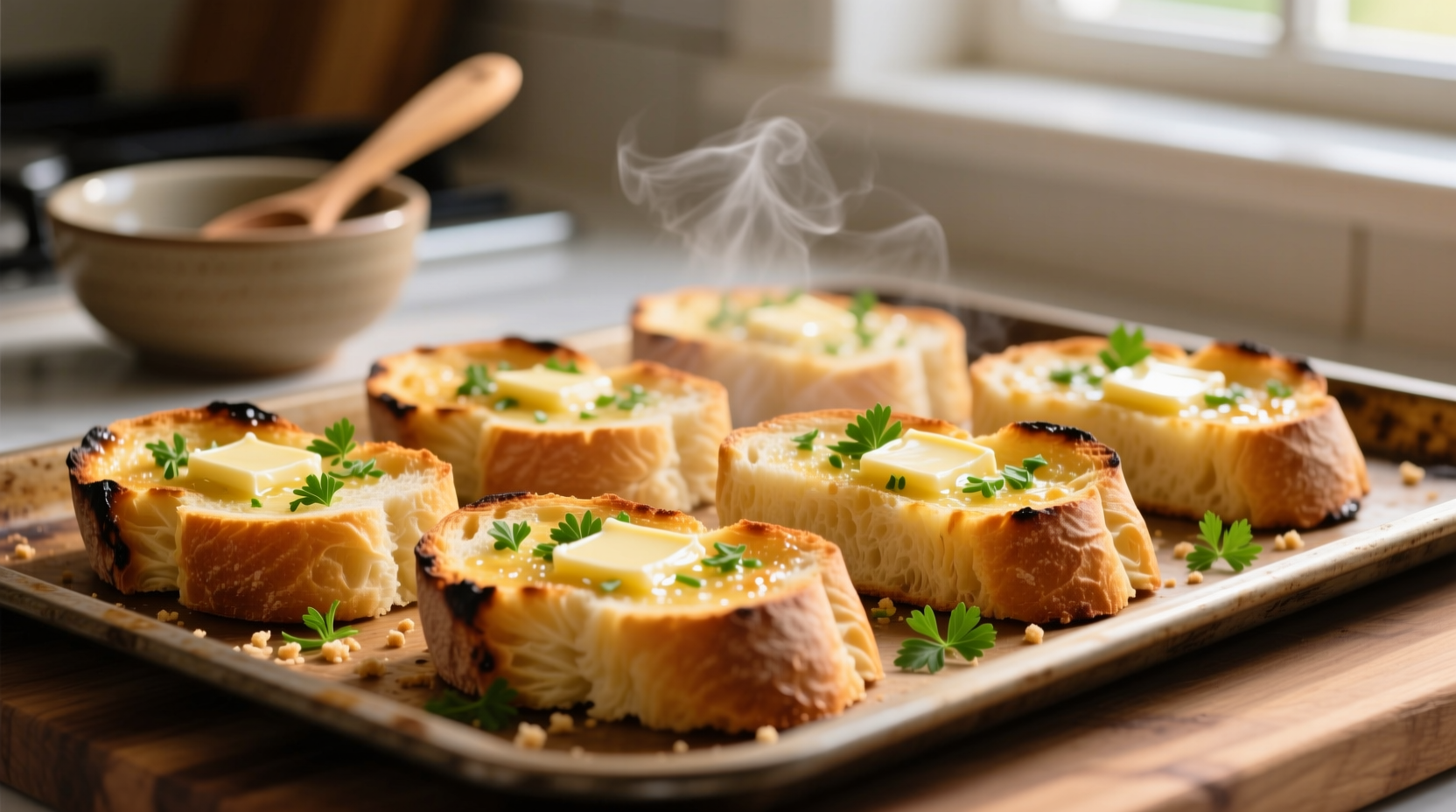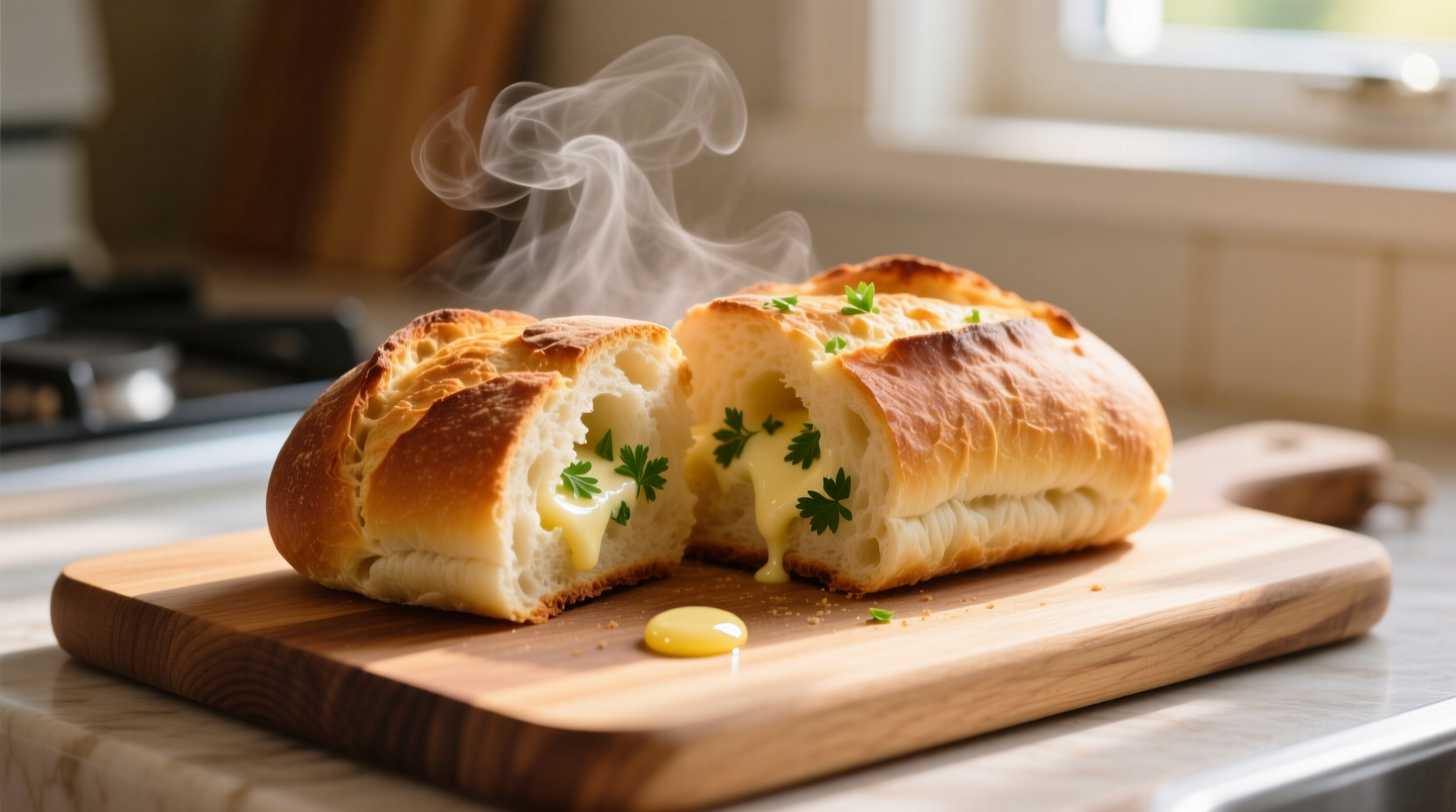Getting garlic bread temperature right transforms a simple side dish into a culinary highlight. Whether you're working with store-bought frozen bread or crafting your own artisanal version, understanding the science behind baking temperatures prevents common pitfalls like burnt garlic, soggy texture, or underdeveloped flavors. This guide delivers precise temperature guidelines backed by culinary science, helping home cooks achieve restaurant-quality results every time.
Why Temperature Matters for Perfect Garlic Bread
Garlic bread sits at the intersection of bread science and flavor chemistry. The ideal temperature range of 350-375°F (175-190°C) balances three critical factors: bread structure development, garlic compound activation, and butter absorption. At lower temperatures, garlic fails to release its full aromatic compounds, while higher temperatures cause garlic to burn before the bread properly toasts.
According to the Culinary Institute of America's baking guidelines, the Maillard reaction—responsible for that perfect golden-brown crust—occurs most effectively between 300-350°F (149-177°C). However, garlic bread requires slightly higher heat to properly melt the butter-garlic mixture into the bread's crevices without separating.
| Temperature Range | Texture Result | Flavor Development | Recommended Use |
|---|---|---|---|
| 325°F (163°C) | Soft exterior, minimal crispness | Mild garlic flavor, buttery notes | Frozen garlic bread, delicate baguettes |
| 350°F (177°C) | Lightly crisp exterior, soft interior | Well-balanced garlic aroma | Standard homemade garlic bread |
| 375°F (190°C) | Optimally crisp exterior, chewy interior | Full garlic flavor development | Artisan breads, thicker slices |
| 400°F+ (204°C+) | Risk of burning, uneven texture | Burnt garlic, bitter notes | Avoid for standard garlic bread |
Step-by-Step Temperature Guide for Perfect Results
Preparation Temperature Considerations
Start with room-temperature butter (65-70°F/18-21°C) for optimal garlic infusion. Cold butter won't properly coat the bread, while melted butter separates and pools. The USDA Food Safety and Inspection Service recommends keeping perishable ingredients like butter below 40°F (4°C) until preparation, then bringing to room temperature just before use.

Baking Process Temperature Progression
Follow this temperature timeline for flawless results:
- Preheat oven to 375°F (190°C) - Allow 15-20 minutes for proper preheating
- Initial bake: 8-10 minutes - Creates foundation for even browning
- Rotate pan - Ensures even exposure to heat
- Final bake: 3-5 minutes - Achieves perfect golden color
- Optional broil: 30-60 seconds - For extra crispness (watch carefully)
Context Boundaries: When to Adjust Temperatures
Several factors require temperature adjustments for optimal garlic bread results:
- Frozen garlic bread: Bake at 350°F (177°C) for 12-15 minutes to allow proper thawing and heating
- Convection ovens: Reduce temperature by 25°F (14°C) and check 2-3 minutes early
- High altitude (above 3,000 ft): Increase temperature by 15-25°F (8-14°C) to compensate for lower air pressure
- Thick-cut bread: Start at 350°F (177°C) for 5 minutes, then increase to 375°F (190°C)
Troubleshooting Common Temperature Issues
When Garlic Bread Doesn't Turn Out Right
Most garlic bread problems stem from temperature issues. Here's how to diagnose and fix them:
- Pale, soft bread: Oven temperature too low or insufficient baking time. Solution: Increase temperature by 25°F (14°C) and extend baking time by 2-3 minutes.
- Burnt garlic, perfect bread: Garlic compounds burned before bread toasted. Solution: Reduce temperature to 350°F (177°C) and extend time slightly.
- Soggy bottom: Insufficient bottom heat. Solution: Place bread directly on oven rack for last 3 minutes of baking.
- Dry, hard texture: Overbaking or excessive temperature. Solution: Reduce temperature by 25°F (14°C) and check 2 minutes earlier.
Advanced Temperature Techniques
Broiling for Perfect Finish
The final 30-60 seconds under the broiler creates that coveted restaurant-style crispness. Position the bread 4-6 inches from the heating element and watch continuously. This technique works best after the bread has already reached 350°F (177°C) internal temperature.
Resting Temperature Importance
Allow garlic bread to rest for 3-5 minutes after baking. During this time, the internal temperature gradually decreases from approximately 200°F (93°C) to 180°F (82°C), allowing the structure to set properly. Cutting too soon releases steam that should remain trapped for optimal texture.
Food Safety and Temperature Guidelines
While garlic bread isn't typically a food safety concern like meat products, proper temperature handling prevents potential issues. The FDA Food Code recommends keeping perishable ingredients like butter below 40°F (4°C) until preparation. After baking, consume garlic bread within 2 hours at room temperature or refrigerate promptly.
For reheating leftovers, the USDA recommends bringing food to an internal temperature of 165°F (74°C) to ensure food safety. When reheating garlic bread, 350°F (177°C) for 5-7 minutes typically achieves this while restoring optimal texture.
Perfect Garlic Bread Temperature Cheat Sheet
Bookmark these key temperature points for flawless garlic bread every time:
- Ideal baking temperature: 375°F (190°C)
- Minimum safe internal temperature: 180°F (82°C)
- Butter melting point: 90-95°F (32-35°C)
- Maillard reaction range: 300-350°F (149-177°C)
- Garlic burning point: 392°F (200°C)











 浙公网安备
33010002000092号
浙公网安备
33010002000092号 浙B2-20120091-4
浙B2-20120091-4